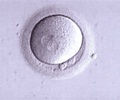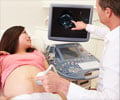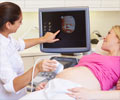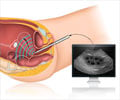Accurate measurements and tracking of disease progression now possible with new system built at MIT.

The improvements to this widely used technology could provide detailed information far beyond what is possible with existing systems, the researchers say. The work, led by Brian W. Anthony, co-director of MIT’s Medical Electronic Device Realization Center (MEDRC) and director of the Master of Engineering in Manufacturing Program, was recently presented at the International Symposium on Biomedical Imaging in Barcelona, Spain.
Advertisement
Together, the two improvements could make sonography a much more precise tool for monitoring the progression of disease, Anthony says. The devices are currently undergoing three clinical trials, including one at Boston Children’s Hospital focused on monitoring the progression of patients with Duchenne Muscular Dystrophy (DMD).
In that trial, Anthony says, researchers are trying to determine “how fast the muscle deteriorates, and how effective different medications are.” It’s important to have a reliable way of monitoring changes in muscle, he says. The study is aimed at determining whether ultrasound analysis can serve as a convenient, noninvasive, clinically meaningful way of monitoring disease progression in DMD.
The new device maintains constant force through the addition of a force sensor to its probe tip and servomotors that can respond almost instantly to changes in force. That, in turn, makes it possible to analyze how the image varies as the force increases, which can provide important diagnostic information about the elasticity of skin, muscle and other tissues.
Advertisement
Anthony likens that precise positioning to “an on-the-patient GPS system” for locating structures in the body. The ability to take images over time from exactly the same position makes it possible to monitor changing tissues quite precisely: The imaging system can determine the volume of a near-surface tumor or other feature to within an accuracy of 1 to 2 percent, he says. There are existing ways to get this kind of accuracy, but these require expensive specialized equipment that few hospitals have.
Advertisement
Steiner adds: “The field of ultrasound is still developing. Ultrasound will partially replace CT scans, reduce radiation exposure to patients and make diagnosing easier when away from the high-cost hospitals. It can help our world provide care at a more reasonable cost with a new paradigm of care.”
The research was conducted by Anthony, mechanical engineering graduate student Matthew Gilbertson and electrical engineering graduate student Shih-Yu Sun. The work has been supported by the Singapore-MIT Alliance, Terason and GE Healthcare.
Source-MIT News















